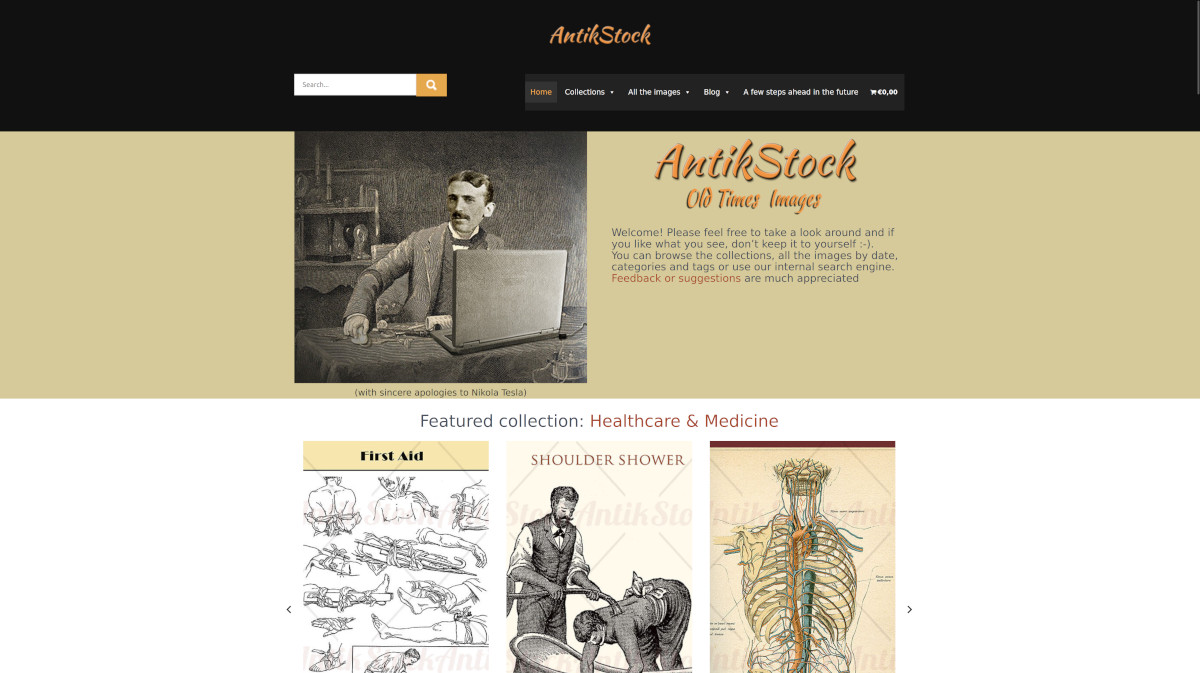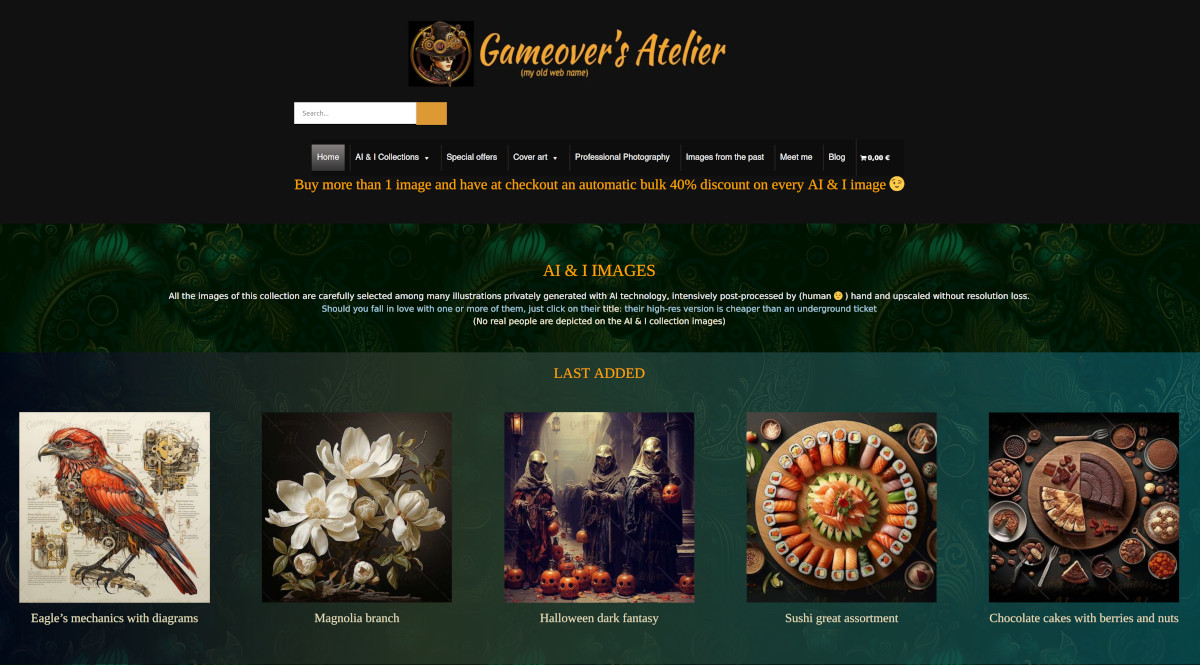Thank you Taras for offering me this opportunity to be a host on your blog, thus forcing me with your collaboration proposal to think about what I could squeeze out of my long self-hosting experience that might come in handy to other people - sometimes lazy people like me need a bit of prodding…
My experience with the microstock agencies
I’ve been dealing with the microstock world since 2008, when I started contributing to Dreamstime. Not as a professional photographer but just as a part-time enthusiastic amateur: the best part of my time was (and still is) devoted to software R&D on behalf of other companies and to my pocket-size web-design company in partnership with Sonja, my trusted alter ego.
By “microstock” I mean mostly photography (editorials, travels, still life), a few movie clips, some 3D rendering, and in the last years also AI-generated images manually retouched to my satisfaction.
However, as a passionate collector of dusty ancient tomes, I found a surprisingly profitable market niche in the fascinating vintage illustrations they feature, mainly in those exquisitely chiseled engravings: an almost forgotten form of art that once accurately scanned, meticulously processed, sometimes even partially reconstructed, meets with unexpected appreciation by a vast share of buyers.

And to think that I believed I was among the few who liked them…
I’ve always wished to sell my images on my own, without going through the agencies - also out of personal pride, besides the obvious financial reasons (the agencies make $ and pay ¢). While striving to do that I run into - and overcame - several difficulties of various kinds, and eventually attained a partial success, but also got some disappointment. Due to my technical background it wasn’t a problem setting up a fully optimized (speed, performances, SEO etc.) online shop, but the marketing was and still is quite a problem: while the flow of visitors stays high, constant and satisfactory, the sales rate is almost negligible compared to what I sell through the agencies. Why? That is the question!
Just a dream?
I gave it plenty of thought: it would be so nice if it were possible to contrive a portal where individual photographers could merge with their own niches and websites, possibly with an efficient quality filter so that it would attract buying visitors by offering them a vast choice of quality product thus effectively competing with the microstock agencies.
Not a new idea indeed: there have been and there still are around akin solutions some of them I tested personally (there’s no point in re-inventing hot water). But for some reason or other no one worked out satisfactorily for me. Let’s see why, in a nutshell.
Symbiostock
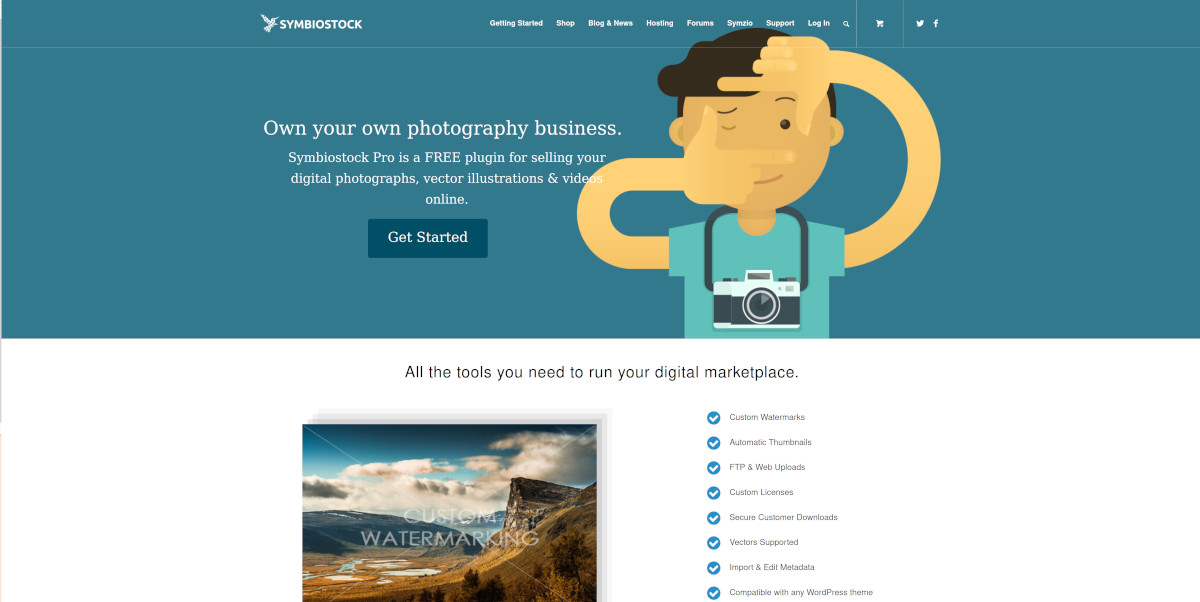
A great guy had a great idea in which many believed. But after a while he abandoned ship and left the helm in the hands of another guy. I jumped in when Symbiostock was already sagging, clashed against several technical flaws and left. I believe that its weak points were too many dreams and underrating the importance of technical skills.
Picfair

It’s a sales platform for photographers that looks absolutely perfect.
There one may create an own website with an own domain name and a very professional look, where images can be uploaded effortlessly once they pass a fair quality control. The images can be arranged in albums and are sold at an author-specified price (with a minimal share for Picfair). Picfair also offer a “Print On Demand” service. All this at a ludicrous yearly price (€50-60), considerably less than a decent host would demand. Looks really like a dream…
But alas, by them I sell only a couple of images per year at best, nor did I ever hear otherwise elsewhere. Where’s the catch? Picfair offers really much, takes away all your technical headaches, provides you with a beautiful business card… but doesn’t do any marketing. Period.
Nevertheless for sentimental reasons I’m still keeping this beautiful business card, even if I sell more on my WordPress websites, no POD service, no great “unity is strength” ideals. Such a pity…
Shopify
It’s a real alternative: a market-platform where you can sell just anything. I tried it after a long pleasant mail exchange with Jacob Lund, a true professional photographer with many thousands of high-quality lifestyle pictures on his site, all of them really beautiful - no wonder he has such a great success.
Shopify is very well optimized, a site by them is easily arranged and very fast, their pages respond instantly - most appreciated by Google too. My hope was that its optimization also extended to the marketing.
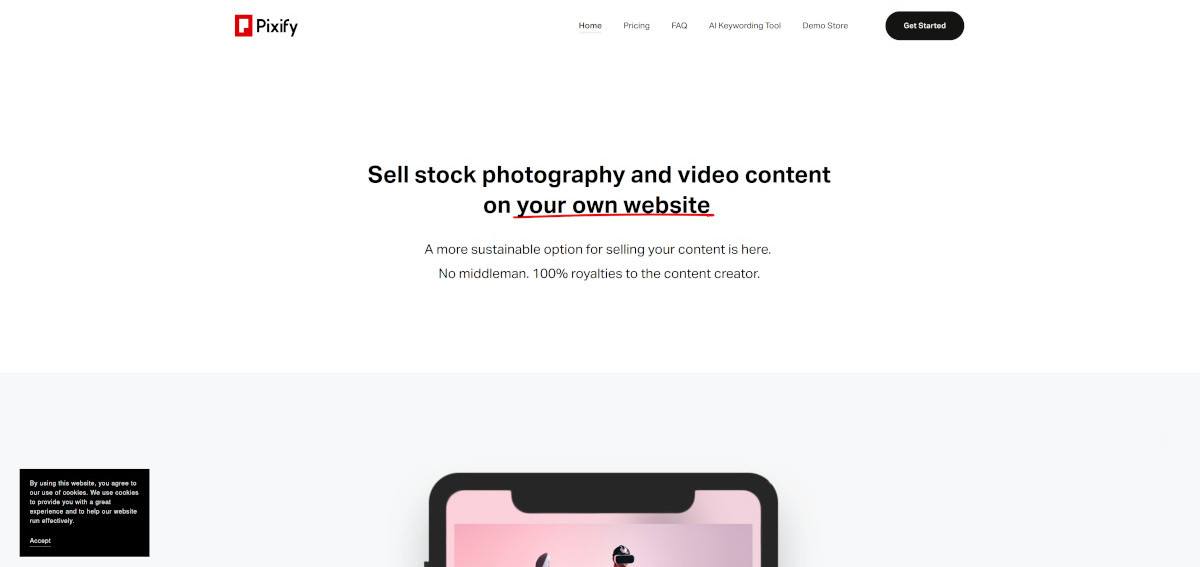
Jacob Lund and his software-partner Schonert released Pixify, a fantastic image (and clip) management app that integrates with Shopify thus granting fast uploading, metadata extraction and all which is required to show them optimally on the site.
Pixify’s customer support is first class and a helpful forum is also available. With great enthusiasm I built on Shopify a site parallel to my existing WordPress one, with new images arranged and showed in a different way.
Unfortunately though, while with WordPress you can do virtually everything free of charge, on Shopify the same things come to a price. You pay a monthly fee, you pay for the apps. And those apps, with the only exception of Pixify, are IMO Shopify’s weakest point: most of them don’t look very professional and, unlike WordPress, the choice is pretty limited. That’s also because Shopify is based on an own language, Liquid, unheard of on other platforms. Still, by comparing the costs with an average quality hosting, everything adds up right.
Just a pity that my old WordPress site (that I had even stopped updating) kept selling, while in six months on Shopify I didn’t sell a single hairpin. Damn it!
Wordpress + Woocommerce
After telling you about my disappointments I’ll better move on a better note, the WordPress alternative.
With WordPress one may set up a shop to sell his or her own images even without being particularly tech savvy, all it takes is a little patience.
Just a word of warning though: whereas on Picfair and Shopify building a website of your own takes little more than a few mouse clicks, using WordPress needs a bit of web skills - no, you won’t have to learn HTML and PHP (God forbid!), but you’ll still need to emboss WordPress into a website of your own; no big deal today, however it may take a little longer than just saying “I Want, I Can And I Command!”.
Perhaps I’m biased, but I got to love WordPress: firstly, it’s totally open source and totally free. Secondly, I can change theme (the whole site appearance) with the same easy nonchalance with which a teenager changes her hairdo.
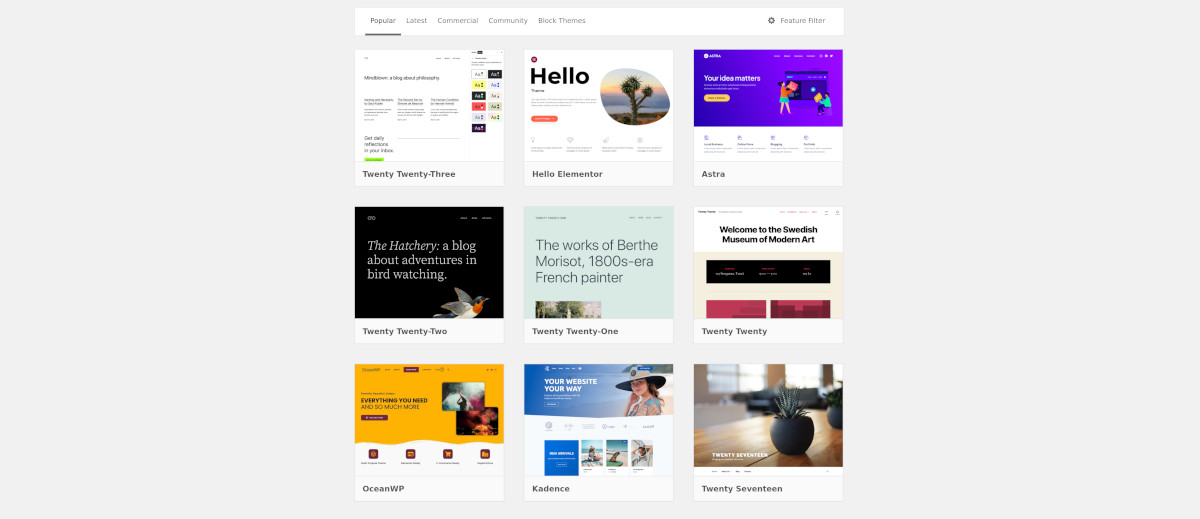
Thirdly, I can add countless functions and features any time by just choosing between zillions of free plugins and loading the ones I like best. And even if I run into a plugin I like but comes to a cost, all I have to do is take a good look around to find another one that does the same task, with the same professionalism, but comes for free: backup, cache, security, internal search engine, thumbnail optimization, shop, you name it…
Did I ever mention that I was raised in Genoa, Italy, where people are a little more cheapskate than the Scots? ;-)
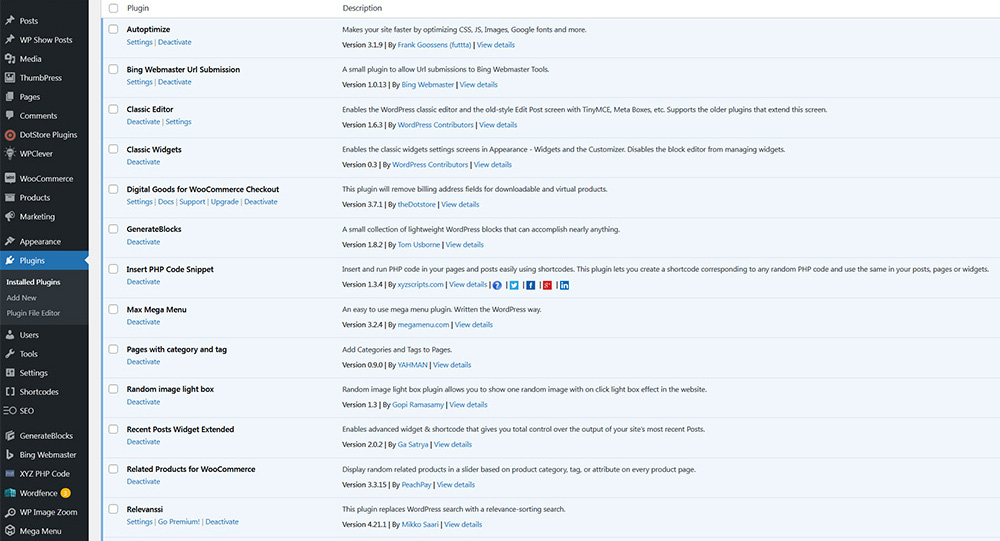
A partial list of free plugins on one of my shop-websites
I also changed the whole shop: initially I was with Easy Digital Download but now I’m happier with WooCommerce. Why?
First, I had a stupid but nasty technical issue with EU VAT: just a matter of a few ¢, but no one wants to get tax troubles due to bureaucratic fussiness.
Second, the people behind EDD were a little too greedy for my taste: they demanded dear money just to allow me to duplicate a product page. And their customer support wasn’t that great either. Time to move away.
WooCommerce is way more flexible, offers an enormous amount of selling options, and whenever I needed any help from them, they proved competent, friendly and got right to the point. However, as I mentioned above, using WordPress offers several great advantages but poses a further problem: the hosting.
Self-hosting
I lost count of how many hosts I used and changed; some of them don’t exist anymore, some changed hand, some had feral security issues… by a few I didn’t stay longer than one hour before walking out slamming the door.
Choosing the right host is of paramount importance for the success of your site: the right host must be secure and fast, very fast. And such performances are expensive. The good news is that usually for the first year you get an enormous discount (sometimes even over 50%) so that you have one whole year to evaluate if your business is worth the expense. Just be aware that the following years you’ll have to pay much more.
Sometimes (as in my case) you might be looking also for unlimited memory space and the possibility of hosting there unlimited websites, email accounts, databases, etc… no delusion of grandeur, just ambition to grow without bumping head into unexpected walls. For such luxury I pay (without regretting it much) about $300 per year, but if you cut a little those crazy requirements you may get much better conditions. Just don’t save on security and speed for you might regret it bitterly very soon.
Since several years I’m enjoying a turbo WordPress server by A2 Hosting (affiliate link), a company from Ann Arbor, Michigan with international centers in the Netherlands and Singapore. They provide a faster performance by using an own PHP API for speed improvement and a built-in caching engine. Maybe for the first time in my life I’m quite happy with the hosting company - unlikely as it may sound, I couldn’t ask more: top level servers, service and support. Wish me that they keep it like that…
I realize that what I wrote so far is just a rough overview that touches a few points but doesn’t come even close to facing other important ones, such as for instance the resources automation - basically the bulk uploading of images and the corresponding product-pages creation on the spot without any manual intervention. But the available space is limited, and so is your valuable time; should you have any question please feel free to write me ([email protected] ) and I’ll be happy to help you as much as I can.
My websites
I also lost count of how many times I changed the look and the contents of my self-hosting sites: voila the current configuration of one of them, my beloved Antikstock for oldtimer images:
Another one, Gameover’s Atelier for the AI generated images, looks now like this:
I decided to put particular emphasis (and time, and sweat) on them as most agencies are very finicky when it comes to AI-generated images, no matter if human-postprocessed and retouched: the general attitude is a blunt “NO!”. Adobe and Dreamstime actually accept them, but the former with a long, long, long waiting list, the latter at once but with a very low selling rate.
Moreover I think that hosting only AI generated images - the best, more artistic ones, some of them too good to sell them off cheap elsewhere - might turn into a real benefit once the average buyer realizes that “AI-generated” doesn’t necessarily mean “out of the can” and may entail quite a lot of human creativity.
As far as my Picfair site is concerned, I left there many photos but without further updating it. Lazy as I am, I’m postponing the decision about what to do with those photos - another self-hosted website perhaps?
All those websites of mine are obviously interlinked to one another and to my blog, another website of course - oops, I forgot to mention the blog… did you already guess that I’m rather fond of making websites? ;)
What’s next
The next topic to be discussed shall be the web marketing, the toughest bone of the
whole story. And no, it won’t be easy…
Not at all, as it is a though issue for everybody, in particular for myself: little ashamed as I am of that, I’m not a social person. My fault, obviously, but that cannot be helped. Oh yeah, as web-designer, for the sake of my faithful customers I must have an account on all existing social media in case they need help there. But personally I’d rather not hang out there for long - there are only 24 hours in a day, you know…
Anyway I’ve been playing with some thoughts about web marketing and a few potentially interesting ideas popped up. We’ll see them next time!


